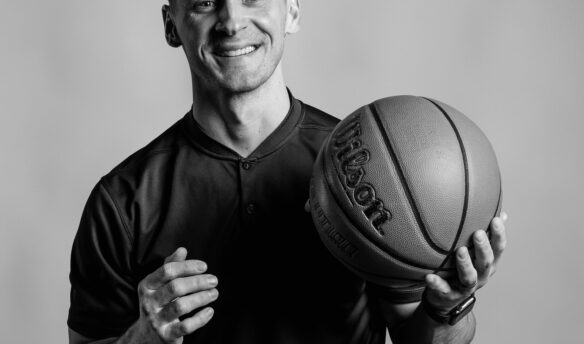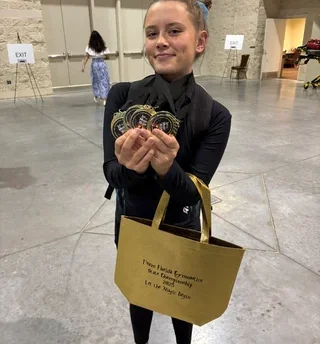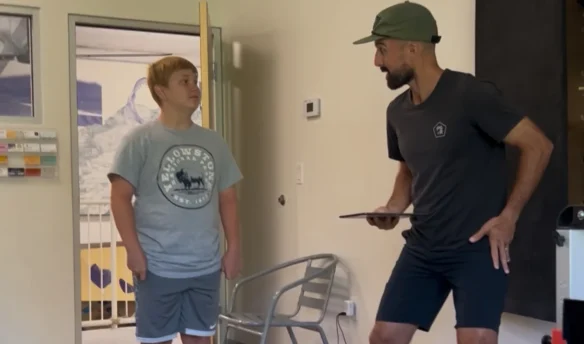Hey PS+R Community! Are you getting out and enjoying some cooler fall weather with a nice run?
We have several members hitting their peak training weeks for a fall marathon- including many first timers! If you’ve ever picked up running before, have you had that one family member or friend who tries to cajole you and tell you that running is “bad” for your knees or your hips? Believe it or not, we actually have great evidence that this is NOT true. Short term studies that examined MRI findings of the hip joint at the beginning and and of a 4-month beginner training program for their first marathon showed no changes in the hip joint on MRI scans (Horga et al., 2021). There is even more positive evidence for runners when it comes to knee pain and osteoarthritis. Two systematic reviews have concluded that recreational runners actually had a LOWER occurrence of knee osteoarthritis than individuals who are sedentary (Alentorn-Geli, 2017; Kraeutler, 2023). Some of the research on this topic actually concludes that running can be protective against the development of both general knee pain and future osteoarthritis (Dillon, 2023; Esculier, 2023).
“The majority of the general public, who may be concerned about the safety of running should be educated about the physical and mental benefits of recreational running, including its potential to positively influence the joint health of healthy individuals.”
Esculier, 2024 from Osteoarthritis and Cartilage, the premier journal publishing on osteoarthritis.
So why is the myth of running being bad for your joints so difficult to dispel? The misunderstanding is both in the nuance of an athlete’s history with the sport and in how cartilage responds to impact forces with running. We do know that elite athletes (we are talking athletes competing internationally and at the professional and/or olympic level) do have an increased incidence of hip and knee arthritis. This may be due to the total volume of work they do over their careers but also likely reflects the risks they need to take in training to compete at the top level- including training and racing in an injured or overloaded state. Taking calculated risks to be at peak form for key races is part of the game of elite athleticism.
We also know that cartilage does temporarily show changes in its morphology for about 24 hours after an episode of running- BUT- this is also how cartilage receives nutrition. What we once thought of as evidence of negative changes in cartilage is actually the process by which cartilage takes in fluid and strengthens in response to exercise. Increasing the impact force through the cartilage progressively over time, with enough recovery time between bouts, is the key to developing healthy joints and using running as your super power to protect your hips and knees.
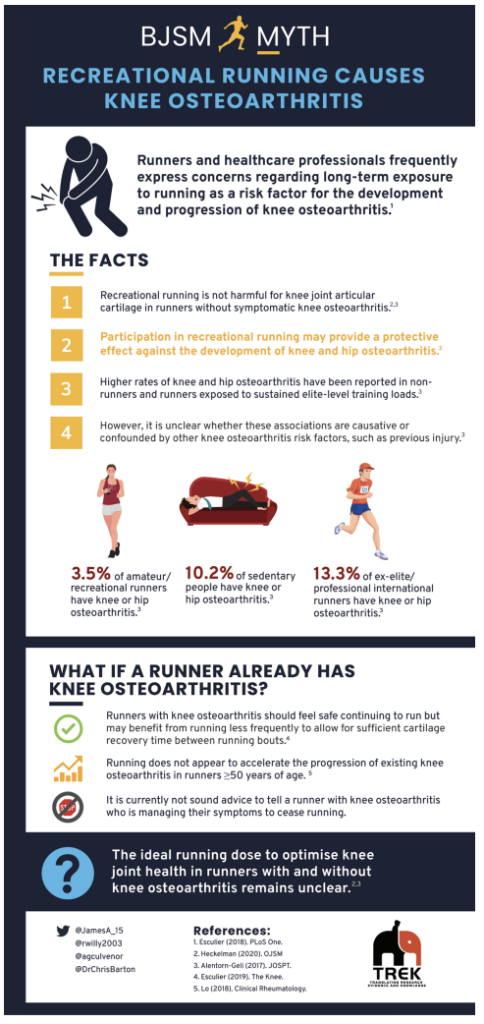
Libby’s Research
Libby published her first, first author article this past week. Her work, published in Bone & Joint Open, examined the validity of a single number to assess functional abilities in patients with hip pain compared to longer forms that are traditionally used in orthopedics to assess how hip pain affects people’s daily lives. It turns out that asking a patient 0-100% how they feel they are functioning with their hip pain matches up pretty well to longer questionnaires that often take up to 20 minutes for a patient to complete. You can check it out here:
https://boneandjoint.org.uk/article/10.1302/2633-1462.510.BJO-2024-0094.R1 Bergman, Elizabeth M., et al. “Concurrent validity of the Single Assessment Numerical Evaluation and hip-specific patient-reported outcome measures.” Bone & Joint Open, vol. 5, no. 10, 2024, pp. 904-910.
Where in the world is Steve and the USMNT?
The United States Men’s National Team will take on Jamaica in a quarterfinal Nations League match up on November 14th in Kingston and November 18th in Saint Louis. The United States are the current title holders of this competition and will have to get a positive result in a difficult environment to keep the streak alive. Tune into TNT or Peacock to view the match!
Libby also welcomed her beautiful baby girl,
Junie Claire Bergman on October 8th!

PS+R Client Spotlight | Rebecca LeClaire
PS+R would like to recognize Rebecca LeClaire. Rebecca was able to overcome a chronic neck condition and get back to a consistent gym routine over the past 2-months. Rebecca is a great example of what is possible when someone takes responsibility and consistently implements a daily corrective strategy to get back to their preferred high-performance activity. Great job Rebecca!

How is it possible that running may actually be good for your joints and protect against osteoarthritis?
How is it possible that running may actually be good for your joints and protect against osteoarthritis? The secret is in that “pounding” that we tend to think of as being bad for our joints. Impact forces are actually how our the cartilage in our joints receives nutrients and maintains a healthy state.
Backing up for a second, any conversation about osteoarthritis (OA) will center around cartilage as we know that changes in cartilage thickness and integrity are at the heart of the development of OA. While there is a short term effect of single bouts of exercise including running where the cartilage can be seen to temporarily thin on imaging studies, we actually know this a byproduct of a healthy process by which the cartilage temporarily loses some water content prior to drawing it back in as it recovers from the work. This process is one of the main mechanisms by which cartilage receives its nutrition and stays healthy. With repeated impact and compression loading, the cycle of the joint fluid (called synovial fluid) being pumped in and out of the cartilage is the main way cartilage maintains its health. This process brings in nutrients that help the cartilage to stay healthy while removing waste products from the joint.
Most soft tissue in our body gets nutrients from blood supply that brings in components of the immune system and removes waste products to stay healthy. But cartilage is avascular- it has no blood supply to it except at the junction where it meets the bone and the bone marrow. Animal studies have shown the the diffusion of synovial fluid through exercise and repetitive loading is the primary mechanism for cartilage nutrition and that the bone marrow vascularity provides much less assistance to keeping the cartilage healthy.
The figure below is a great illustration of how synovial fluid diffusion works to keep cartilage healthy in a healthy joint and in a joint with OA. The lymphatic system and blood vessels surrounding the joint work to remove waste products and bring in components around the cartilage needs to build healthy cartilage including collagen and water loving compounds called proteoglycans.
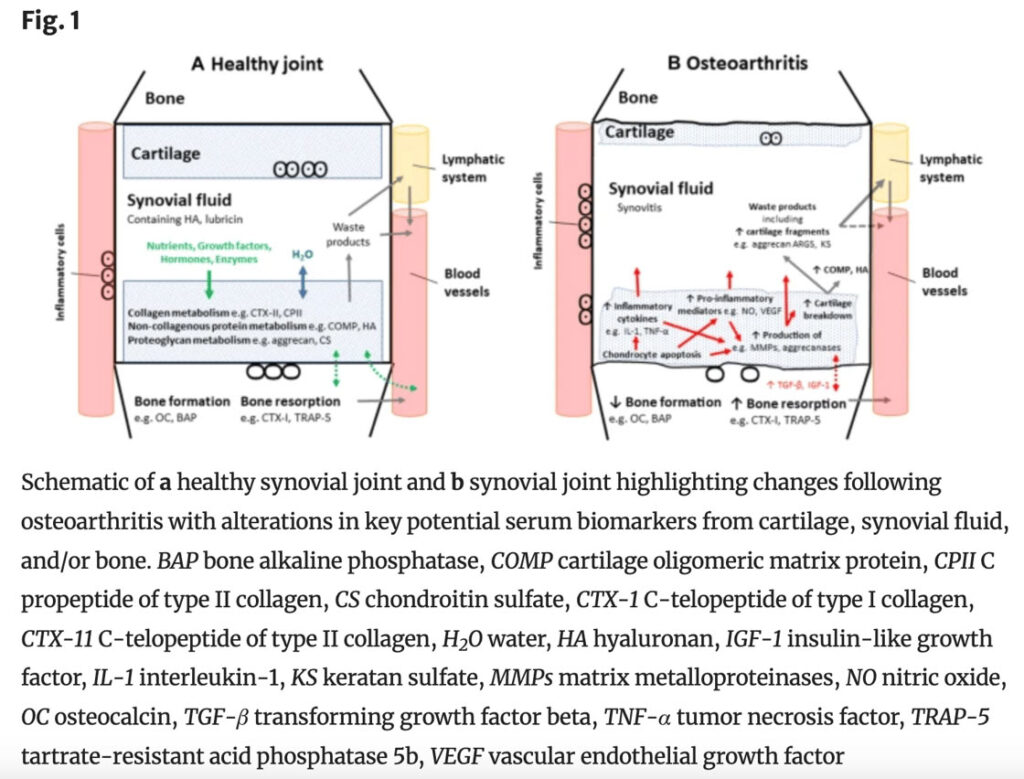
Wang, Y., Wei, L., Zeng, L. et al. Nutrition and degeneration of articular cartilage. Knee Surg Sports Traumatol Arthrosc 21, 1751–1762 (2013). https://doi-org.ezp.twu.edu/10.1007/s00167-012-1977-7
Thanks for staying connected with us! See you around!!
